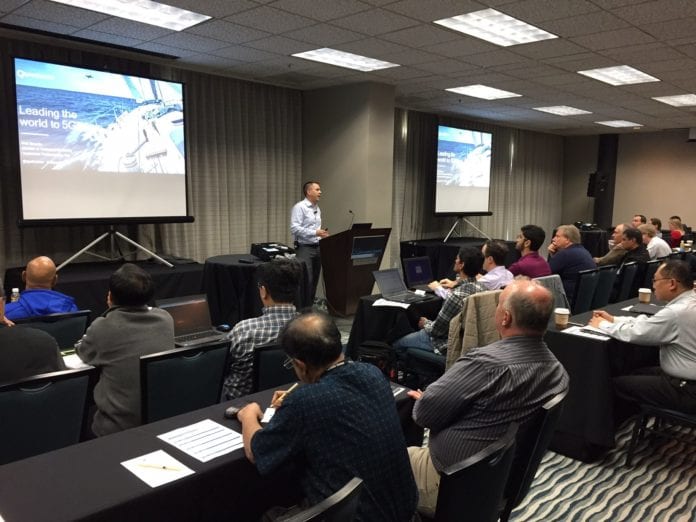DEL MAR, Calif. – As “5G” moves into development, testing and standardization phases, the outline of the next generation of wireless technology is becoming more clear – and so are the challenges that come along with meeting new and complex network demands.
With each jump to a next generation there is often a disconnect between the actual emerging standard and the marketing terminology that carriers use as they begin trials and commercialization. There are some concerns that prestandard work in 5G may lead to some fragmentation within the 5G ecosystem, according to Andreas Roessler, technical marketing manager with Rohde & Schwarz.
Speaking to the audience at this week’s 5G Innovation Summit, Roessler said that while moving to LTE got operators on common ground standards-wise, they still had to deal with supporting dozens of spectrum bands around the world, plus the differences between frequency division duplex and time division duplex. As operators begin 5G activities ahead of standardization, Roessler said, they are identifying use cases and moving faster than standards work, increasing the the risk of divergence. In addition, he said there are two modes of 5G network operation being laid out in standards: standalone, with both a 5G radio access network and core; and nonstandalone, where there are still legacy LTE elements in play. There are eight options for network architecture within the nonstandalone framework, Roessler said, so there may be significant differences in how “5G” carrier networks are structured as they enable new services like virtual reality and gaming experiences for sports fans.
Reiner Stuhlfauth, technology marketing manager with Rohde & Schwarz, said the industry is taking a different strategy with its approach to 5G than it did with the change from 3G to LTE. In that transition, he said, the use cases for 3G and 4G “were largely the same. Now we’re thinking about the service requirements” and basing work on 5G on the services and use cases that operators intend to enable,
“We talk about the services and applications – what do we want? Can we find a waveform that is suited, more or less, to the application?” Stuhlfauth said, adding “The bad news is, there is no perfect waveform in 5G.”

